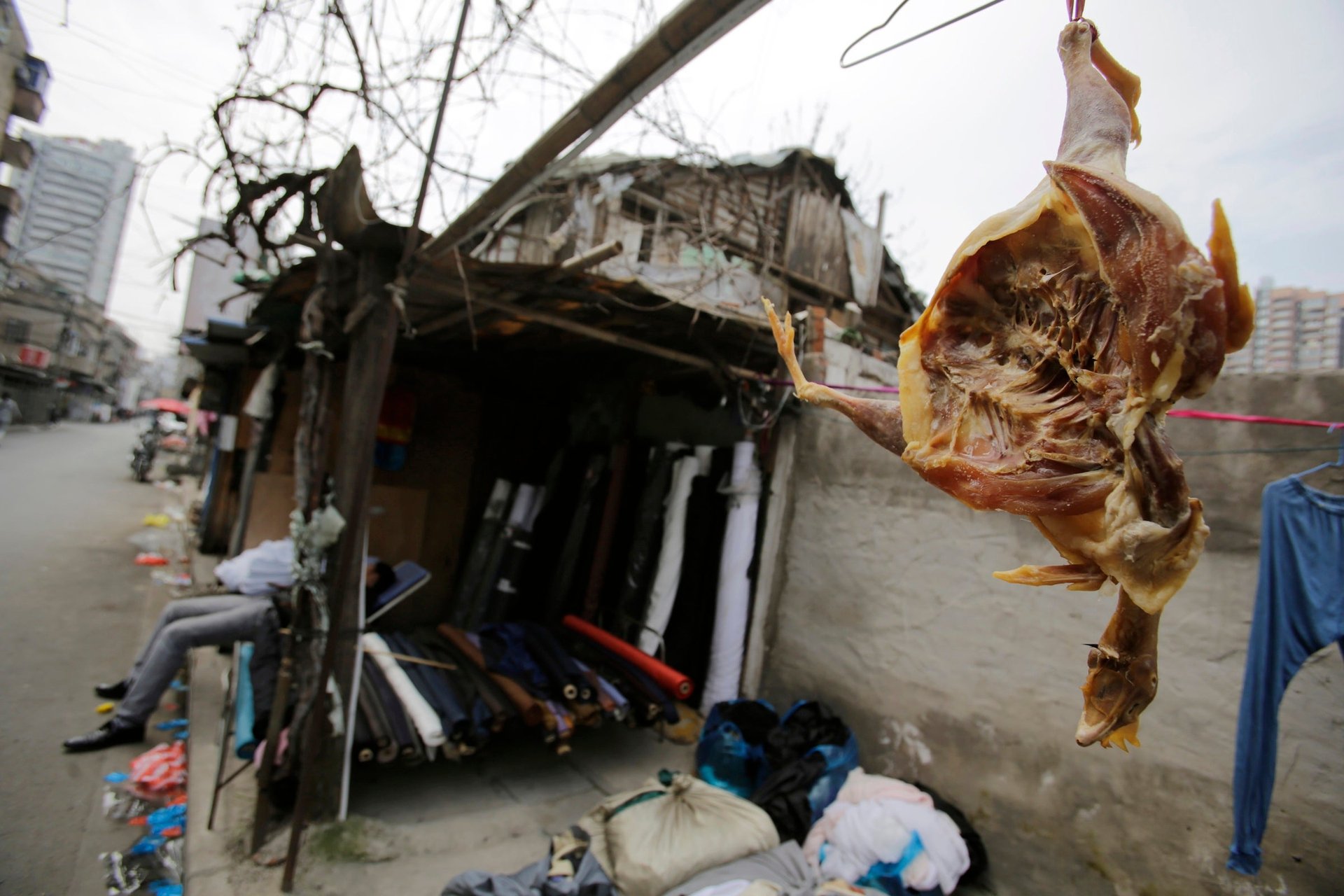What you need to know about the mounting bird flu toll in China
Chinese official media said today that four more people have been infected with a rare, possibly mutated, form of bird flu, bringing the total number of cases in China to seven. The cases raise alarm over whether an outbreak could be brewing in the country, which is especially vulnerable to infectious diseases moving from animals to humans, and has a troubling history of authorities trying to conceal public health crises.


Chinese official media said today that four more people have been infected with a rare, possibly mutated, form of bird flu, bringing the total number of cases in China to seven. The cases raise alarm over whether an outbreak could be brewing in the country, which is especially vulnerable to infectious diseases moving from animals to humans, and has a troubling history of authorities trying to conceal public health crises.
The newest patients, three women aged 32-45 and one 83-year-old man from Jiangsu province along China’s eastern coast, are critically ill with H7N9, a strain of avian flu that has never infected humans before and for which there is no vaccine, according to a notice on the province’s health bureau website. On March 31, authorities said that two men (aged 87 and 27) had died from the virus in Shanghai and one woman in Anhui province is in critical condition.
The most worrying part is that authorities don’t know how these people were infected. There’s no evidence so far that any of the patients interacted with each other, a sign that the bird flu hasn’t mutated into a virus that can jump between humans rather than just from animal to human–the basis for a global pandemic. Yet, most of the patients were not in close contact with birds (one woman was a poultry butcher and the woman in Anhui had some contact with live chickens.) Moreover, the mysterious illnesses are being disclosed within six weeks of over 16,000 carcasses of mysteriously killed pigs and 1,000 ducks floating in waterways near Shanghai and Sichuan province.
So how did they contract the virus? The World Health Organization said yesterday that there’s no evidence the virus can be transmitted between humans. But Wu Fan, director general of the Shanghai Municipal Center for Disease Control admitted today that the possibility can’t be ruled out. ”We cannot say for certain or confirm if it was a case of a human catching an avian virus or an avian virus changing and becoming a new human flu virus,” he said.
Laurie Garrett, a senior fellow for global health at the Council on Foreign Relations, writes that one worryingly plausible explanation is that the virus did take human transmissible form. H7N9 may have undergone a mutation (maybe among the spring migrating birds at Lake Qinghai) that made it lethal for domestic ducks, and was then spread from ducks to pigs, given that both animals are often raised in close quarters by Chinese farmers. “Once influenza adapts to pig cells, it is often possible for the virus to take human-transmissible form,” she writes, noting that that’s what happened in 2009 when H1N1 swine flu spread around the world. “If the pigs, people, and birds have died in China from H7N9, it is imperative and urgent that the biological connection be made and extensive research be done to determine how widespread human infection may be,” she writes.
Chinese authorities, who have so far been cagey about the mass pig death, should test the pig carcasses for H7N9 and disclose whether they had something to do with the two deaths in Shanghai. Peter Katona, professor of medicine at the division of infectious diseases at UCLA’s medical school, says “All of that is possible, but you really don’t know until you do some tests of the animals.”
The difference between the new H7N9 virus and H1N1 in 2009 is that H7N9 could be more virulent; two out of the first three infections were fatal. The infections, the floating pig and duck carcasses, and China’s historically nontransparent way of dealing with outbreaks are perhaps unrelated. But it’s too early to be so sure.